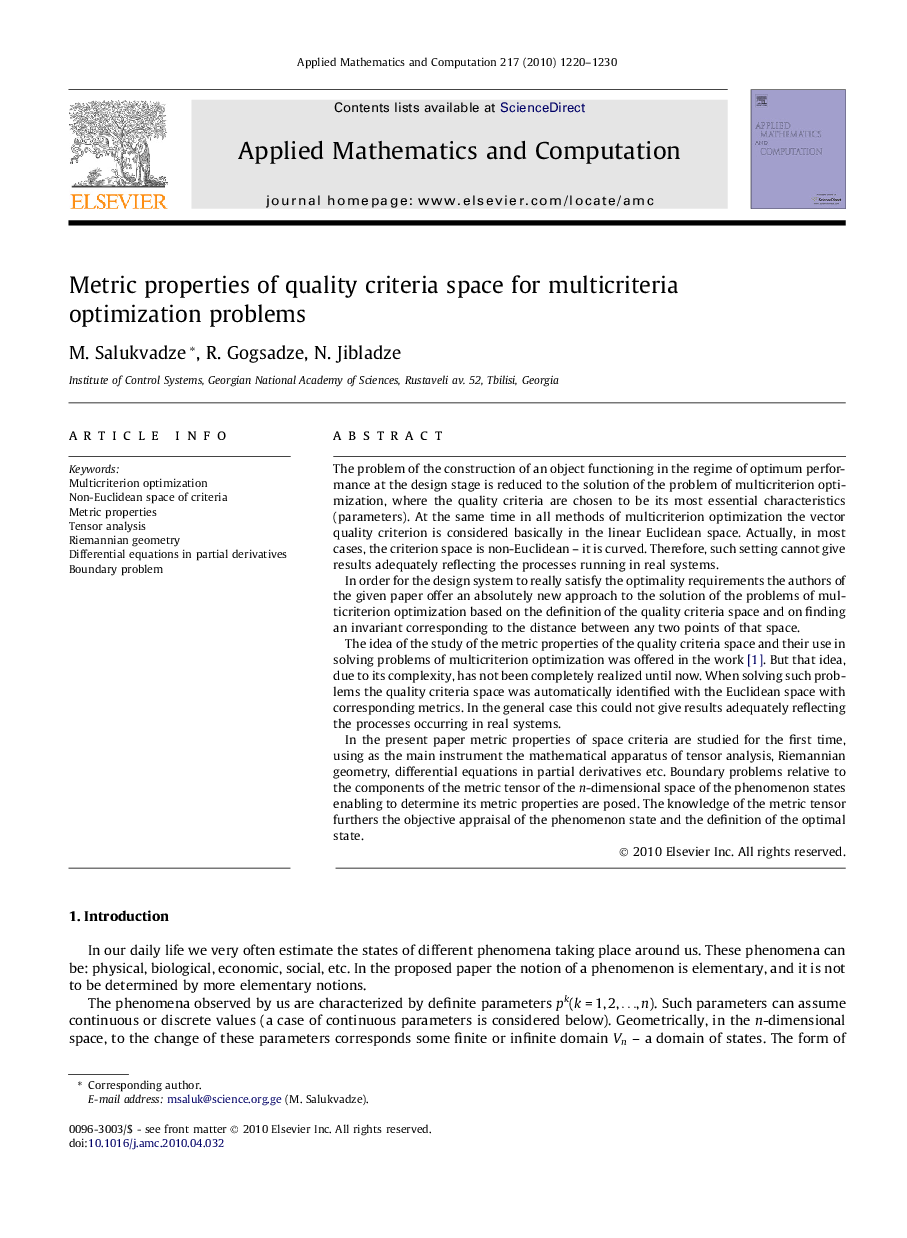| Article ID | Journal | Published Year | Pages | File Type |
|---|---|---|---|---|
| 4632217 | Applied Mathematics and Computation | 2010 | 11 Pages |
The problem of the construction of an object functioning in the regime of optimum performance at the design stage is reduced to the solution of the problem of multicriterion optimization, where the quality criteria are chosen to be its most essential characteristics (parameters). At the same time in all methods of multicriterion optimization the vector quality criterion is considered basically in the linear Euclidean space. Actually, in most cases, the criterion space is non-Euclidean – it is curved. Therefore, such setting cannot give results adequately reflecting the processes running in real systems.In order for the design system to really satisfy the optimality requirements the authors of the given paper offer an absolutely new approach to the solution of the problems of multicriterion optimization based on the definition of the quality criteria space and on finding an invariant corresponding to the distance between any two points of that space.The idea of the study of the metric properties of the quality criteria space and their use in solving problems of multicriterion optimization was offered in the work [1]. But that idea, due to its complexity, has not been completely realized until now. When solving such problems the quality criteria space was automatically identified with the Euclidean space with corresponding metrics. In the general case this could not give results adequately reflecting the processes occurring in real systems.In the present paper metric properties of space criteria are studied for the first time, using as the main instrument the mathematical apparatus of tensor analysis, Riemannian geometry, differential equations in partial derivatives etc. Boundary problems relative to the components of the metric tensor of the n-dimensional space of the phenomenon states enabling to determine its metric properties are posed. The knowledge of the metric tensor furthers the objective appraisal of the phenomenon state and the definition of the optimal state.
